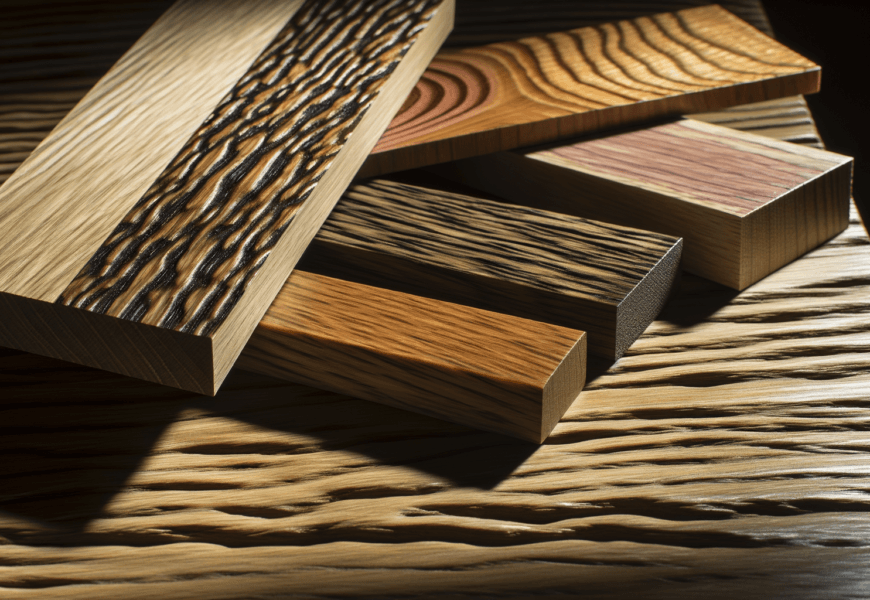Choosing the perfect wood for your homemade coffee table not only influences its aesthetics but also impacts its durability and functionality. In 2024, with a plethora of wood options available, selecting the right one can be a daunting task. This guide will walk you through the nuances of various wood types, ensuring that your coffee table is both beautiful and built to last.
Understanding Wood Characteristics
Before diving into specific wood types, it's important to grasp the key characteristics that differentiate them. Aspects such as grain patterns, hardness, and color variations play a significant role in determining the right wood for your project.
First, consider the hardness of the wood. Hardwoods like oak and maple are known for their durability and are ideal for furniture that endures daily use. Softwoods, such as pine and cedar, are lighter and generally more affordable, but might show signs of wear more quickly.
Next, focus on grain patterns. The grain of the wood can add unique aesthetic qualities to your table. For example, woods like walnut and cherry have distinctive grains that can enhance the visual appeal of your coffee table.
Finally, take into account the color and finish. While some woods like cherry develop richer hues over time, others like ash retain their original color with minimal changes. The final finish can alter the appearance significantly, so consider how stains and varnishes will affect the end result.
Popular Woods for Coffee Tables
Oak
Often revered for its strength and durability, oak is a popular choice for coffee tables. Its coarse grain pattern adds a rustic charm, making it suitable for both classic and contemporary settings. Red and white oak varieties offer subtle differences, with red oak having a slightly more pronounced grain and pinkish hue.
Walnut
Known for its rich, dark color and straight grain, walnut offers a luxurious touch to any coffee table. Though it tends to be more expensive, its durability and distinctive appearance make it a worthwhile investment, especially for those aiming for an elegant or mid-century modern style.
Cherry
Cherry wood is appreciated for its smooth grain and warm, reddish-brown color that darkens with age. It’s moderately hard, providing a good balance between durability and workability, ideal for crafting detailed designs.
Maple
Maple, with its fine, even grain and light color, is incredibly versatile. It’s a dense hardwood, providing high resistance to wear and tear, perfect for households with children or high foot traffic areas.
Pine
A more affordable choice, pine is soft and easy to work with, often featuring knots that add a rustic charm. Although it’s less durable than its hardwood counterparts, pine’s natural beauty and budget-friendly nature make it a popular choice for DIY enthusiasts.
Sustainable and Exotic Woods
In recent years, there’s been a growing trend towards using sustainable and exotic woods. With environmental concerns on the rise, choosing sustainably harvested wood not only helps the planet but also adds a unique touch to your furniture.
Bamboo
Technically a grass, bamboo is a fast-growing, sustainable alternative to traditional wood. It offers a contemporary look with its distinctive striated appearance and is incredibly strong, rivaling hardwoods in durability.
Teak
Prized for its weather resistance and beautiful golden hue, teak is an exotic wood often used for outdoor furniture. Its natural oils make it resistant to decay and termites, but this quality comes at a premium price.
Budget Considerations
Your budget plays a crucial role in determining the type of wood you can afford. While high-end woods like walnut and teak offer unparalleled beauty and longevity, they come with a higher price tag. However, blending different woods can be a cost-effective solution. For instance, using an expensive wood for the tabletop paired with a cheaper wood for the legs can yield a stunning result without breaking the bank.
Additionally, consider reclaimed wood as a budget-friendly and eco-conscious option. Reclaimed wood has character and history, often salvaged from old barns or factories, adding a storied past to your new coffee table.
Practical Tips for Wood Selection
Understand the Wood’s Purpose: Determine whether your table will be more decorative or functional. Heavily trafficked areas benefit from harder woods.
Sample the Wood: Purchase small samples of your preferred woods and apply finishes to see how they interact. This can prevent surprises in color and texture.
Consider the Environment: If your coffee table will be placed near windows, consider wood varieties less prone to fading or damage from direct sunlight.
- Balance Weight and Sturdiness: Ensure the wood chosen balances the structural requirements with its weight. A solid yet lighter wood like alder can be strategically used to maintain stability without heaviness.
Conclusion
In the quest to craft the perfect homemade coffee table, choosing the right wood is paramount. Understand the unique characteristics of each type—be it oak’s resilience, walnut’s luxury, or pine’s affordability—and align them with your aesthetic and functional needs. Don't forget to factor in sustainability and budgetary constraints for the best results.
Before embarking on your woodworking project, equip yourself with knowledge and perhaps even seek out additional resources like woodworking forums or tutorials. Ready to get started? Share your progress and ideas in the comments below, or reach out for further insights. Let's build that coffee table you've always dreamed of, with the exquisite touch of handpicked wood.









